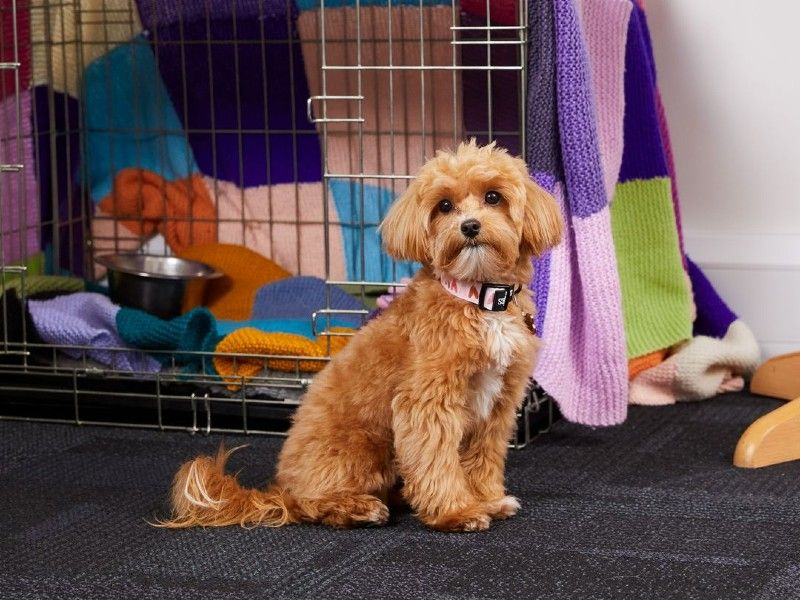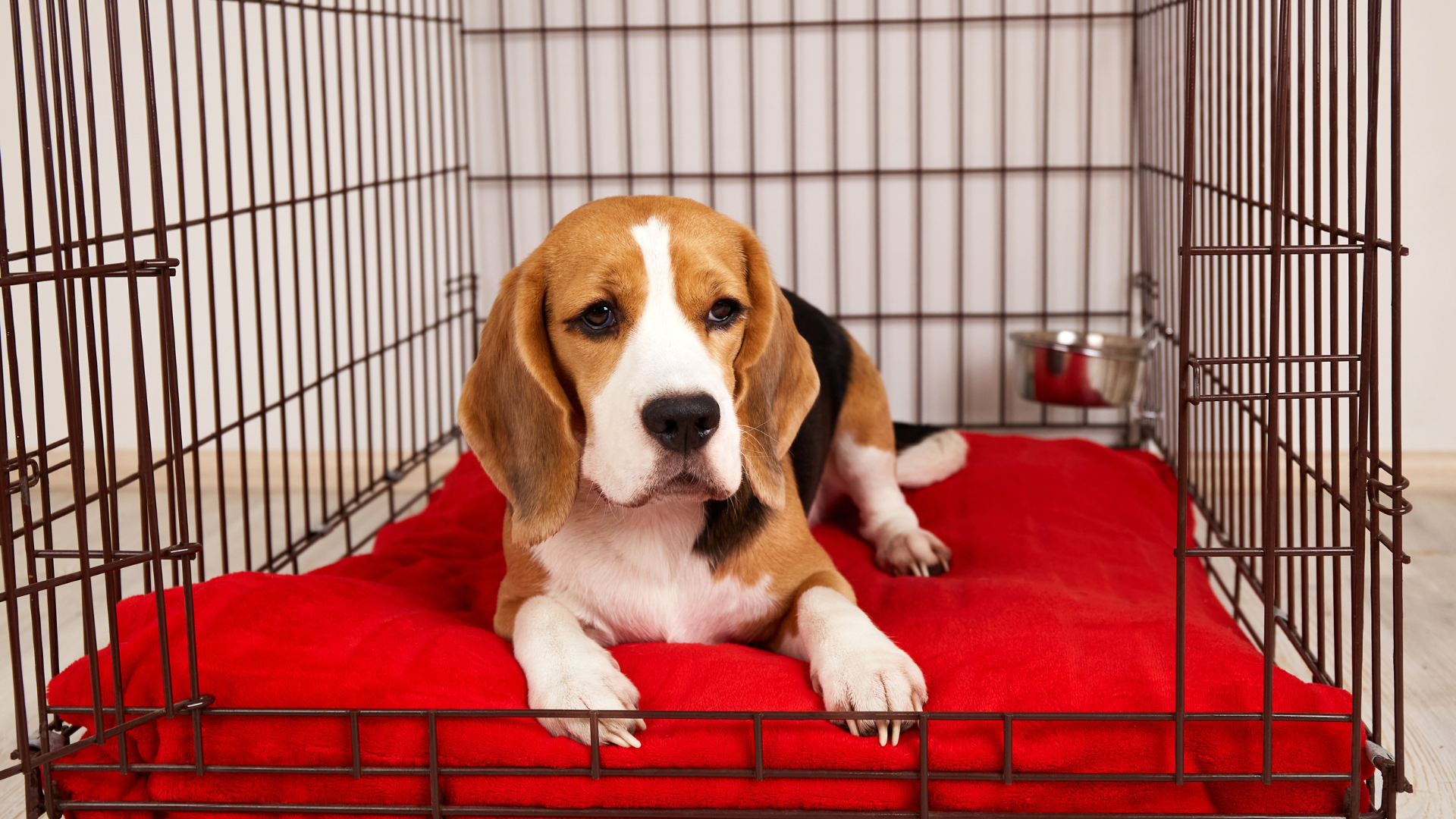Crate training is an essential aspect of house training a puppy. It is an effective way to teach your furry friend to be comfortable in their own space and help them learn to hold their bladder. However, crate training a puppy at night can be a daunting task for many new pet owners. In this article, we will explore the steps you can take to crate train your puppy at night with minimal fuss.

The first step in crate training your puppy at night is to choose the right crate size. The crate should be large enough for your puppy to stand up, turn around, and lie down comfortably. However, it should not be too big, as this can give your pup room to soil one end and sleep in the other. Once you have the right crate, it's time to introduce your puppy to it. Place the crate in an area where your puppy spends a lot of time and put a soft blanket or bed inside. You can even toss a few treats in there to encourage your puppy to explore the crate.
Understanding Crate Training
Crate training is an effective method of house training your puppy. It provides them with a safe and comfortable space to call their own. Before starting crate training, it is important to understand the benefits and how to properly use a crate.
Benefits of Crate Training at Night
Crate training at night has several benefits. It helps to prevent accidents by limiting your puppy's access to the house. It also provides a sense of security for your puppy, as they have a designated space to sleep in. Additionally, crate training can help with separation anxiety, as your puppy will learn to feel comfortable being alone.

Puppy Development and Nighttime Crating
Puppies have different sleep patterns than adult dogs. They require more sleep and may need to go outside to relieve themselves during the night. It is important to take your puppy's age and size into consideration when crate training at night. Young puppies should not be left in a crate for more than a few hours at a time, as they cannot hold their bladder for long periods.
As your puppy grows, you can gradually increase the amount of time they spend in the crate at night. It is important to make sure the crate is the appropriate size for your puppy. A crate that is too small can be uncomfortable and may cause your puppy to develop anxiety.
Overall, crate training at night can be a beneficial tool for house training and providing your puppy with a sense of security. By understanding the benefits and proper use of a crate, you can help your puppy feel comfortable and safe at night.

Crate training is an essential part of raising a puppy, especially if you want to keep them safe and secure at night. Before you start crate training your puppy, there are a few things you need to do to prepare.
Choosing the Right Crate
The first step in preparing for crate training is to choose the right crate. There are several types of crates available, including wire, plastic, and soft-sided crates. Each type has its own advantages and disadvantages, so it's important to choose the one that best suits your puppy's needs.
Wire crates are the most popular type of crate and are great for puppies who like to see what's going on around them. They are also easy to clean and provide good ventilation. Plastic crates are more enclosed and provide a sense of security for puppies who like to feel cozy. Soft-sided crates are lightweight and portable, making them great for travel, but they are not as durable as wire or plastic crates.
When choosing a crate, make sure it's the right size for your puppy. The crate should be big enough for your puppy to stand up, turn around, and lie down comfortably. If the crate is too big, your puppy may use one end as a bathroom and sleep in the other end.
Creating a Comfortable Crate Environment
Once you've chosen the right crate, it's time to create a comfortable environment for your puppy. Start by placing a soft blanket or towel in the crate to make it cozy. You can also add a few toys or chew bones to keep your puppy entertained.
It's important to place the crate in a quiet, low-traffic area of your home. This will help your puppy feel safe and secure. You can also cover the crate with a blanket or sheet to create a den-like environment.
In addition to creating a comfortable environment, it's also important to establish a bedtime routine for your puppy. This should include their evening meal a few hours before bedtime, some time to chew on an appropriate toy for decompression, multiple potty breaks to make sure they are running on empty, and then a calm entrance into the crate for sleep.
By choosing the right crate and creating a comfortable environment, you can help ensure that your puppy has a positive experience with crate training.
Crate Training Techniques
Crate training a puppy at night can be a daunting task, but with the right techniques, it can be a smooth process. Here are some effective crate training techniques that can help your puppy feel comfortable in their crate at night.
Establishing a Routine
Establishing a routine is key to crate training your puppy at night. This routine should include their evening meal a few hours before bedtime, some time to chew on an appropriate toy for decompression, multiple potty breaks to make sure they are running on empty, and then a calm entrance into the crate for sleep.
Positive Reinforcement
Positive reinforcement is an effective way to crate train your puppy at night. When your puppy enters the crate, give them a treat and praise them. This will help them associate the crate with positive experiences and make them more likely to enter it willingly.
Gradual Introduction to the Crate
Introducing the crate gradually is important when crate training your puppy at night. Start by placing the crate in a location where your puppy can see it and get used to it. Then, gradually introduce them to the crate by placing their food and water bowls inside it. Once they are comfortable eating inside the crate, you can start closing the door for short periods of time while you are in the room with them. Gradually increase the amount of time the door is closed until your puppy is comfortable being in the crate for longer periods of time.

In conclusion, crate training a puppy at night requires patience, consistency, and positive reinforcement. By establishing a routine, using positive reinforcement, and gradually introducing your puppy to the crate, you can help them feel comfortable and secure in their sleeping space.
Nighttime Crate Training Tips
Crate training is an essential part of a puppy's life, and it is essential to make sure that they are comfortable and safe in their crate at night. Here are some tips to help with nighttime crate training:
Managing Whining and Barking
It is natural for puppies to whine and bark when they are first introduced to a crate. However, it is important to avoid giving in to their demands and letting them out of the crate. Doing so will reinforce their behavior and make it difficult to train them to stay in the crate at night.
One way to manage whining and barking is to ignore them and wait until they stop before letting them out of the crate. Alternatively, you can try to distract them with a toy or treat to help them settle down and feel more comfortable in the crate.
Ensuring Proper Exercise and Last Call Potty Break
Before putting a puppy in the crate for the night, it is essential to make sure they have had enough exercise and a last call potty break. This will help them feel more relaxed and comfortable in the crate and reduce the likelihood of them needing to go potty during the night.
It is also important to make sure that the puppy has access to water during the day but limit their access to water before bedtime to reduce the likelihood of them needing to go potty during the night.
By following these tips, you can help your puppy feel more comfortable and safe in their crate at night, making crate training a positive experience for both you and your furry friend.
Troubleshooting Common Issues
Dealing with Accidents
Accidents can happen when crate training a puppy at night, especially if the puppy is not yet fully potty trained. To minimize the chances of accidents, it is important to establish a regular routine for taking the puppy out to potty before bedtime. This routine should include multiple potty breaks to ensure that the puppy is empty, and it should be consistent every night.

If accidents do occur, it is important to clean them up promptly and thoroughly. Use an enzymatic cleaner to remove all traces of urine or feces from the crate, as any lingering odors can attract the puppy back to the same spot. Additionally, consider using a waterproof mattress protector or puppy pads to protect the crate bedding from accidents.
Addressing Separation Anxiety
Some puppies may experience separation anxiety when first introduced to crate training at night. This can manifest as whining, barking, or destructive behavior. To address separation anxiety, it is important to gradually acclimate the puppy to the crate by starting with short periods of time and gradually increasing the duration.
Additionally, consider using calming aids such as a pheromone spray or a calming supplement to help the puppy relax. It is also important to provide plenty of exercise and mental stimulation during the day to help the puppy feel tired and ready for sleep at night.
If the puppy continues to exhibit signs of separation anxiety despite these measures, consult with a veterinarian or a professional dog trainer for additional guidance.
Maintaining Consistency
Consistency is key when it comes to crate training a puppy at night. Here are some tips to help maintain consistency throughout the training process.
Sticking to a Schedule
Establishing a consistent schedule for your puppy is crucial for successful crate training. This includes feeding times, potty breaks, and bedtime. Stick to a routine as much as possible, as this will help your puppy feel secure and comfortable in their crate.
When it comes to bedtime, try to establish a routine that signals to your puppy that it's time to settle down for the night. This could include a bedtime snack, a quick potty break, and some quiet playtime before settling into their crate for the night.

Adjusting as Your Puppy Grows
As your puppy grows, their needs will change, and you may need to adjust their crate training routine accordingly. For example, as your puppy gets older and can hold their bladder for longer periods, you may be able to gradually increase the amount of time they spend in their crate at night.
It's important to make these adjustments gradually, however, to avoid overwhelming your puppy. Gradually increasing the amount of time your puppy spends in their crate will help them adjust to the new routine and feel more comfortable in their crate overall.
Remember, consistency is key when it comes to crate training a puppy at night. Stick to a routine as much as possible, and make adjustments gradually as your puppy grows and their needs change. With patience and persistence, you can successfully crate train your puppy and help them feel safe and secure at night.
Conclusion
Crate training a puppy at night is an invaluable process that builds a foundation for good behavior and comfort in their own space. It requires patience, consistency, and the right approach to ensure success. By selecting an appropriate crate, creating a welcoming environment inside it, and establishing a routine, you can make this a positive experience for your puppy.
Incorporate positive reinforcement to help them associate the crate with good things, manage nighttime disturbances patiently, and adjust the routine as your puppy grows. With these strategies, your puppy will soon view their crate as a safe haven, facilitating a smoother house training process and better nights for both of you.




